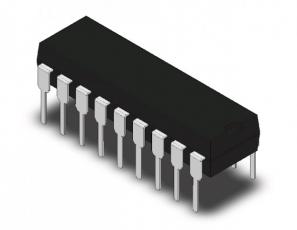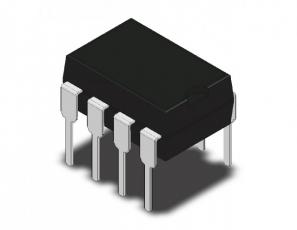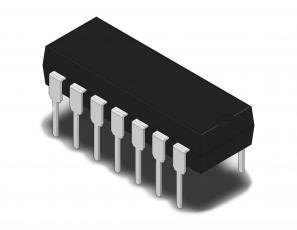Product description
An all-in-one board for making battery powered contraptions that can move, (optionally) make noise, and talk to the internet!
Inventor 2040 is a multi-talented board that does (almost) everything you might want a robot, prop or other mechanical thing to do. Drive a couple of fancy motors with encoders attached? Yep! Add up to six servos? Sure? Attach a little speaker so you can make noise? No problem! It's also got a battery connector so you can power your inventions from AA/AAA or LiPo batteries and carry your miniature automaton/animated top hat/treasure chest that growls at your enemies around with you untethered.
You also get a ton of options for hooking up sensors and other gubbins - there's two Qw/ST connectors (and an unpopulated Breakout Garden slot) for attaching breakouts, three ADC pins for analog sensors, photoresistors and such, and three spare digital GPIO you could use for LEDs, buttons or digital sensors. Speaking of LEDs, we've also somehow managed to fit in 12 addressable LEDs (AKA Neopixels) - one for each servo and GPIO/ADC channel (or just use the whole lot for making rainbows, that's fine too).
Best of all though, is the brains of the outfit - the onboard Raspberry Pi Pico W, which will give your creations 2.4GHz wireless connectivity. Use it to trigger your mechanical friends to do their thing remotely, or perhaps you can make a robotic bird that tweets, and also Tweets?
Features
Raspberry Pi Pico W Aboard
Dual Arm Cortex M0+ running at up to 133Mhz with 264kB of SRAM
2MB of QSPI flash supporting XiP
Powered and programmable by USB micro-B
2.4GHz wireless
2 JST-SH connectors (6 pin) for attaching motors
Dual H-Bridge motor driver (DRV8833)
Per motor current limiting (0.5A)
Per motor direction indicator LEDs
2 pin (Picoblade-compatible) connector for attaching speaker
JST-PH (2 pin) connector for attaching battery (input voltage 2.5V - 5.5V*)
6 sets of header pins for connecting 3 pin hobby servos
6 sets of header pins for GPIO (3 of which are ADC capable)
12 x addressable RGB LEDs/Neopixels
User button
Reset button (built in Captain Resetti!)
2 x Qw/ST connectors for attaching breakouts
Unpopulated headers for adding a Breakout Garden slot
Fully assembled
No soldering required (unless you want to add the Breakout Garden slot).
C/C++ and MicroPython libraries
Software
Pimoroni's C/C++/MicroPython libraries provide an easy way to interface with the functions on this board.
Inventor 2040 is a multi-talented board that does (almost) everything you might want a robot, prop or other mechanical thing to do. Drive a couple of fancy motors with encoders attached? Yep! Add up to six servos? Sure? Attach a little speaker so you can make noise? No problem! It's also got a battery connector so you can power your inventions from AA/AAA or LiPo batteries and carry your miniature automaton/animated top hat/treasure chest that growls at your enemies around with you untethered.
You also get a ton of options for hooking up sensors and other gubbins - there's two Qw/ST connectors (and an unpopulated Breakout Garden slot) for attaching breakouts, three ADC pins for analog sensors, photoresistors and such, and three spare digital GPIO you could use for LEDs, buttons or digital sensors. Speaking of LEDs, we've also somehow managed to fit in 12 addressable LEDs (AKA Neopixels) - one for each servo and GPIO/ADC channel (or just use the whole lot for making rainbows, that's fine too).
Best of all though, is the brains of the outfit - the onboard Raspberry Pi Pico W, which will give your creations 2.4GHz wireless connectivity. Use it to trigger your mechanical friends to do their thing remotely, or perhaps you can make a robotic bird that tweets, and also Tweets?
Features
Raspberry Pi Pico W Aboard
Dual Arm Cortex M0+ running at up to 133Mhz with 264kB of SRAM
2MB of QSPI flash supporting XiP
Powered and programmable by USB micro-B
2.4GHz wireless
2 JST-SH connectors (6 pin) for attaching motors
Dual H-Bridge motor driver (DRV8833)
Per motor current limiting (0.5A)
Per motor direction indicator LEDs
2 pin (Picoblade-compatible) connector for attaching speaker
JST-PH (2 pin) connector for attaching battery (input voltage 2.5V - 5.5V*)
6 sets of header pins for connecting 3 pin hobby servos
6 sets of header pins for GPIO (3 of which are ADC capable)
12 x addressable RGB LEDs/Neopixels
User button
Reset button (built in Captain Resetti!)
2 x Qw/ST connectors for attaching breakouts
Unpopulated headers for adding a Breakout Garden slot
Fully assembled
No soldering required (unless you want to add the Breakout Garden slot).
C/C++ and MicroPython libraries
Software
Pimoroni's C/C++/MicroPython libraries provide an easy way to interface with the functions on this board.








